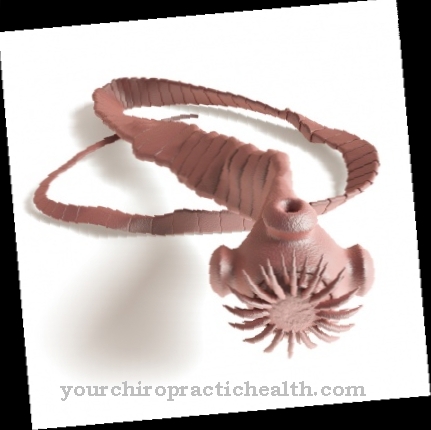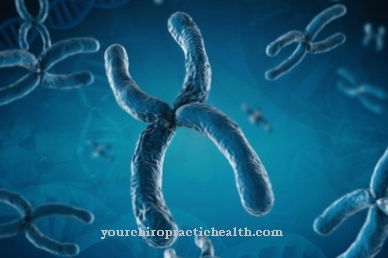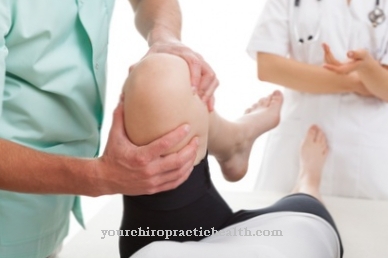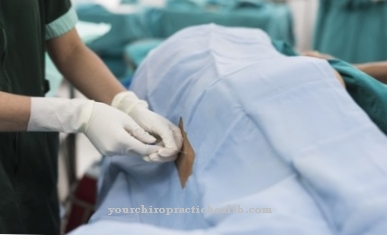Manual therapy is a generic term for various forms of therapy that are used to treat disorders of the musculoskeletal system. Manual therapeutic procedures belong to the field of alternative medicine, but are also part of manual medicine, which is carried out by many physiotherapists and masseurs.
What is manual therapy?

The term manual therapy is understood in the broadest sense to be a procedure for treating joints, muscles or nerves. Manual therapy includes diagnostic and treatment techniques. Manual therapies include osteopathy, chiropractic, cranio-sacral therapy, ortho-bionomy, atlasology and orthopedic manual therapy (OMT).
In the narrower sense, manual therapy is a protected form of physiotherapy and can be prescribed by the attending physician by means of a prescription for medicinal products. The additional qualification manual therapy for physiotherapists comprises further training with at least 250 teaching hours. The term manual therapist may only be used after completing this training.
Function, effect & goals
In the classic manual therapy by the physiotherapist, a diagnosis of the joint mechanics, the muscle functions and the coordination of movements is carried out. A treatment plan is drawn up on the basis of the examination results. This includes various hand movements and mobilization techniques. These techniques are intended to relieve pain and eliminate functional disorders of the musculoskeletal system.
Some of the treatment techniques are passive, which means that only the therapist mobilizes the patient's muscles and joints. Another part of the treatment consists of exercises in which the patient is actively involved. The aim of classic manual therapy is to enable a physiological interaction between muscles, joints and nerves.
Chiropractic was developed by the American physician Daniel David Palmer. His goal was to use chiropractic treatment techniques to restore normal mobility to restricted joints. One focus of chiropractic is the treatment of the spine. Subluxations, that is, displacements, of the vertebral body are treated with special hand movements. Chiropractic assumes that displaced vertebral bodies can trigger a wide variety of symptoms by putting pressure on the spinal nerves and the spinal cord. So-called tractions are supposed to result in a pressure reduction and joint relief by pulling joint structures apart.
In combination with a stretching of the surrounding ligaments and the joint capsule, improved mobility should be achieved. Stretching and relaxation techniques adapt the muscles to the new freedom of movement. Just like chiropractic, cranio-sacral therapy also comes from the USA. Cranio-Sacral Therapy is based on the assumption that a certain rhythm, the craniosacral pulsation, can be found within the cerebral and spinal fluid.
The spinal fluid is used for nutrition, protection and mobility of the nervous system. According to craniosacral therapy, the craniosacral rhythm spreads throughout the body. If the rhythm is disturbed, this can result in pain, restricted mobility, tension and impairment of the immune system. The task of the cranio-sacral therapist is to feel the rhythm of the craniosacral system and to correct the rhythm with gentle pulling and pushing movements in the event of rhythm disturbances.
Osteopathy was also founded in America. The basic assumption of osteopathy is that the body is able to regulate and heal itself. The prerequisite for this, however, is that all structures in the body are mobile and well cared for. Restrictions of movement hinder the supply of the surrounding tissue and can cause disturbances. The osteopath therefore examines the patient's entire body in order to find any restrictions in the mobility of tissues, muscles and joints. If he finds such restrictions, he can solve them with various techniques.
Ortho-Bionomy is a manual therapy based on physiotherapy, osteopathy and the meridian theory of traditional Chinese medicine. Ortho-Bionomy also focuses on the body's self-regulation and is a salutogenic procedure. Salutogenetic methods serve to maintain health and prevent diseases rather than to treat diseases.
Naprapathy is a procedure from Sweden that may only be carried out by trained Doctors of Naprapathy or Doctors of Naprapathic Medicine. The theory of naprapathy is that scar tissue in muscles, connective tissue and ligaments caused by injuries and poison deposits affects the nerves, blood and lymph vessels and thus causes physical discomfort. With naprapathy, special manual stretching techniques are used to restore the damaged tissue so that blood and lymph can flow freely again and correct nerve stimulus transmission is guaranteed.
You can find your medication here
➔ Medicines for painRisks, side effects & dangers
The effectiveness of manual therapy methods is controversial among doctors. Some scientists even see chiropractic and manual therapy procedures as harmful. Before starting any manual therapy, damage to the spine due to lesions, accidents or bone metastases should be ruled out. Imaging procedures may have to be used for diagnosis.
In particular, improper treatments in the area of the cervical spine can damage the blood vessels in the neck area. If there are arteriosclerotic deposits in these vessels, these can mainly be loosened by jerky manual techniques in the cervical spine area and reach the brain. There, the dissolved arteriosclerotic components can trigger a stroke, for example. However, with more gentle procedures such as cranio-sacral therapy or osteopathy, the risk of a stroke is negligible.
Care should be taken with manual therapy if there are diseases such as osteoporosis, cancer, recent heart attack, broken bones or febrile infections. If you are unsure, you should consult your doctor.













.jpg)

.jpg)
.jpg)











.jpg)